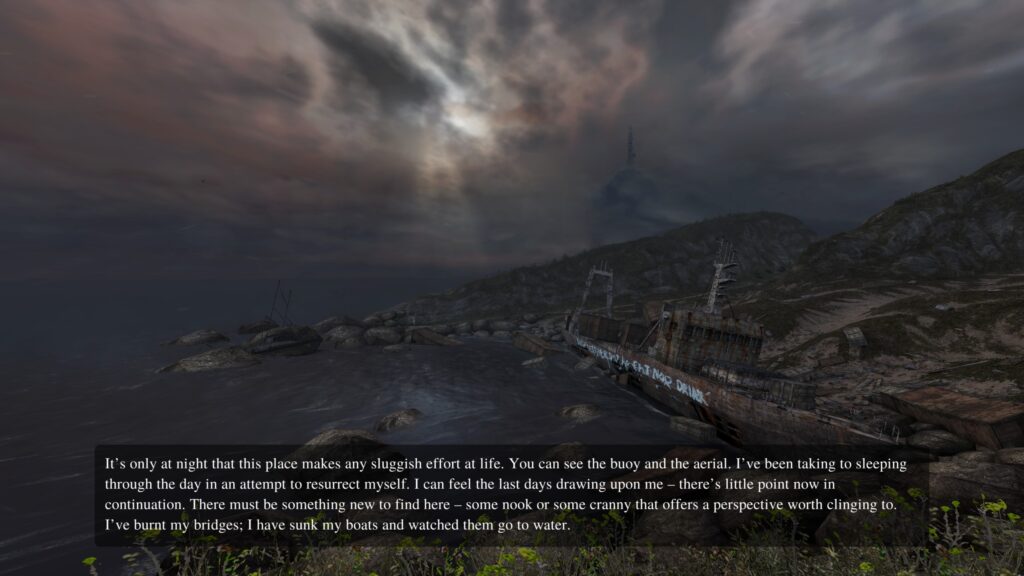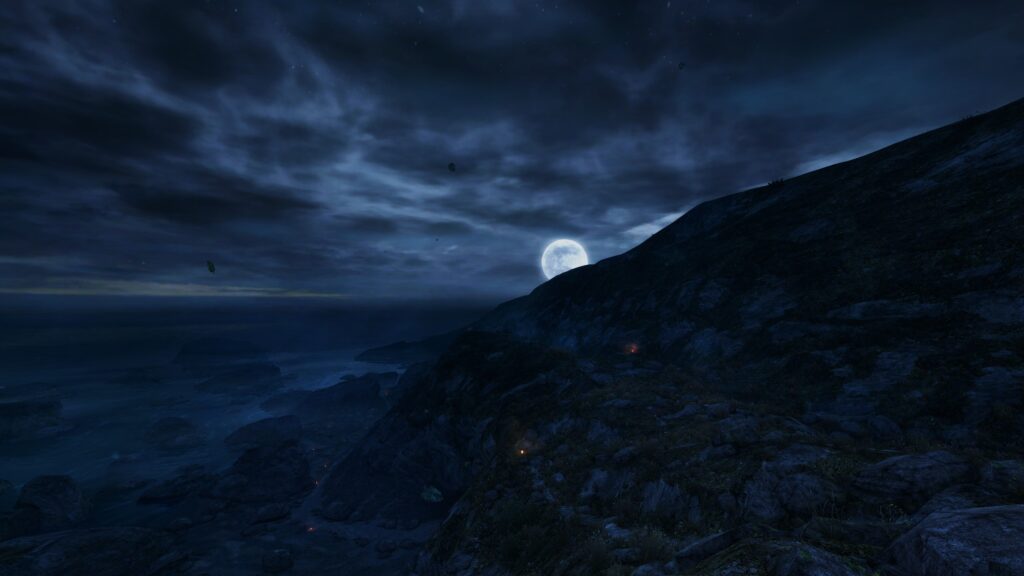
This was distributed for free a while ago on Steam, providing the perfect opportunity to experience what is now hailed as the forerunner of the walking simulator genre. Most people can probably complete this game in about an hour so I was never willing to pay anything like its normal asking price even though I was curious about it. I’ve played enough of the games that came later to already know what to expect and overall this title is pretty much what I thought it would be.
There is very little structure or narrative here. You’re a man exploring an unnamed island in the Hebrides. As you pass by various preset points, you can trigger the narration of letters addressed to this man’s deceased wife Esther and from these you can guess at the broad outlines of his personal tragedy. There are no other ways of interacting with anything. Apart from looking around and walking, the only thing you can do is take a slightly closer look at things. The island seems currently uninhabited but people have lived there in the past and they have left behind traces of their lives. There are abandoned buildings, a wrecked trawler, and an antenna on the island’s tallest point. The narration includes guesses about their lives and their fates as you roam not only all over the surface of island but also under it through its many caves and underwater passages which are lit by bioluminescent moss and whose walls are covered by strange diagrams and writings.

While it can be tempting to try to figure out the man’s story, I don’t think that is really the point. As I understand it, the snippets of narration that can be unlocked are somewhat randomized which to me further indicates that this is not the kind of game that is meant to be solved. I think it’s best to allow the narration to flow over you as poetic accompaniment while you immerse yourself in the environment of the island. Even this remade from the ground up version is many years old by now but I can say without exaggeration its extraordinary and otherworldly beauty remains undimmed. The experience of trekking across the beaches and hills of the island is uncannily captured here and the caves under the island are breathtakingly beautiful. The original music used here plays an essential role as well in setting the proper mood. I will note that while the early parts plausibly resemble a real island, it increasingly feels like a fantastical dreamworld as there is otherwise no explanation of how all those candles are lighted and why the caves and tunnels are all so bright. I would have been just fine with this being a realistic island but I can see how going for the fantastic has more a wow factor.
Playing this while on a break from Hitman 2 makes for particularly illuminating contrast. I wrote how Hitman almost uniquely among game franchises allows the player to interact with the environment in far more ways than just conducting combat in them. The walking simulator genre solves the problem of trivializing the virtual environment in the diametrically opposite direction: by ensuring that it is impossible to interact with it in any way other than immersing yourself in it. The whole point of the game is to feel like you are on the island itself, seeing its sights, imagining the wind blowing across the grass, the rippling of the waves on the shore and so on. The player, knowing that there is no combat and no other gameplay elements, naturally becomes more receptive to details of the environment that might otherwise pass without notice. In this way, it can be said that removing gameplay mechanics makes it more likely for the player to appreciate the beauty and atmosphere of the virtual environment itself.